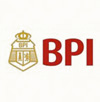All Categories
The Dehydrator Bible: Includes over 400 Recipes
Share Tweet
*Price and Stocks may change without prior notice
*Packaging of actual item may differ from photo shown
- Electrical items MAY be 110 volts.
- 7 Day Return Policy
- All products are genuine and original








About The Dehydrator Bible: Includes Over 400 Recipes
Review This one's an encyclopedia. It's a good resource for recipes on the spot but may be overwhelming if you`re starting out. I like to have it on the shelf in case I'm looking to expand ideas but it`s recipes are so literal (an advantage to many) that I prefer to use this to brainstorm my own ideas from rather than to use it each piece. This could apply to all levels of home preservers but I like it best as an on-demand reference as opposed to a manual. ― Well Preserved wellpreserved.ca Published On: 2011-04-25Dehydrating is one of the most effective ways to preserve food for maximun nutrition at a very low cost. The Dehydrator Bible recognizes that cooking is a blend of science and art. Co-authors Jennifer MacKenize, Jay Nutt and Don Mercer combined their professional expertise to take the guesswork out of drying a variety of foods, and sharing successful techniques and recipes. ― Paris Post-Intelligencer Published On: 2011-05-18 Product Description A new update of the bestselling book in its field -- 100,000 in print. Whether grow-your-own, bought locally from a farmer's market, or fresh from a regular supermarket, seasonality still affects the quality, abundance and price of good food. It just makes sense to preserve food quality for those times when it's not as plentiful or not available at all. Dehydrating food with this terrific book is easy and creates tasty food year-round. Incorporating the age-old practices of food dehydration takes full advantage of what nature offers. All the wonderful recipes are still here and there is a bonus section on everything from pet treats to crafts and homemade gifts. What has changed is that the "Everything You Need to Know About Dehydrating Foods" section has been expanded to include even more comprehensive and complete information about dehydrating foods along with even more tips and techniques. There are more than 150 recipes for dehydrating everything from herbs and seasonings to fruits, vegetables, meats and fish, plus more than 250 delicious recipes that actually use the dehydrated foods as ingredients. Putting home-preserved food to work for home, RV, boat or campsite has never been easier. The easy-to-follow drying instructions along with time guidelines make even a novice cook feel like a seasoned professional. Planting a few extra rows of tomatoes or beans, picking many strawberries at their peak or buying that big basket of freshly harvested carrots can really pay off later. Loading up the dehydrator will provide personally dried foods the whole year through. About the Author Jennifer MacKenzie is a professional home economist, cookbook author and recipe developer. Jay Nutt is a chef and and restaurant owner. Don Mercer, Ph.D., P.Eng, is an associate professor in the Food Science Department at the University of Guelph. Excerpt. © Reprinted by permission. All rights reserved. IntroductionLong before there was a refrigerator (or two) in every home, a deep-freezer in the basement and supermarkets full of pretty much anything in a box, package or jar, making food last between harvest seasons required a great deal of ingenuity. Early civilizations discovered that food left out in the sun was still edible after it was dry. With the advent of fire, drying and smoking became useful tools for food preservation between successful hunts and sustained ancient civilizations by providing a more consistent source of food. Today, we have the benefit of refrigeration, globalized food production, shipping and commercial processing, so we don't have to preserve our own food at all. But as the saying goes, everything old is new again.Welcome to the new-old world of food dehydration. Whether you grow your own food, buy it locally from farmers' markets or farm stands, hunt for your own meat or even buy your food from a regular supermarket, seasonality still affects the price and abundance of food. It just makes sense to take advantage of food when it'


















